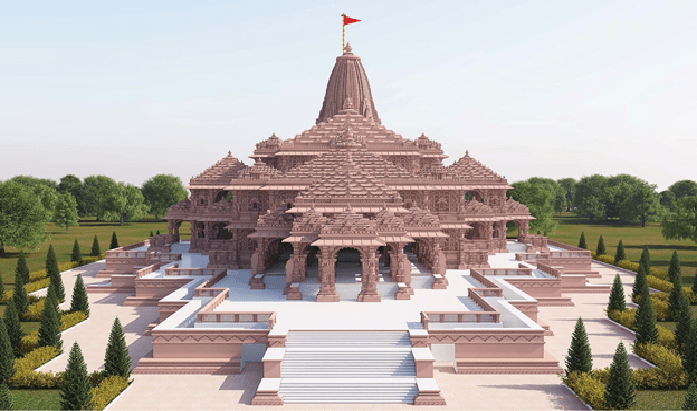Context
● On January 22, 2024, the inauguration of the Ram temple in Ayodhya marked the culmination of a 200-year-old saga that significantly shaped India's socio-political landscape.
● Designed in the Nagara Style of Temple Architecture, the Ram temple stands as a symbol of cultural and religious significance.
● The tale of Ram resonates not only within India but also extends its influence beyond borders, reaching regions from Laos, Cambodia, and Thailand in Asia to Guyana in South America and Mauritius in Africa. The popularity of the Ramayana spans diverse corners of the globe, reflecting its universal appeal.
Uniqueness of Ram Temple:
● Traditional Architecture and Construction:
Embodying the traditional Nagara style, the 3-storey Ram Temple is constructed with pink sandstone sourced from Mirzapur and the hills of Bansi-Paharpur (Rajasthan).
● Temple Dimensions:
The temple spans an expansive 71 acres, showcasing architectural mastery. With a width of 250 feet and a towering height of 161 feet, the main temple area covers 2.67 acres. Noteworthy features include 390 pillars, 46 doorways, and 5 mandaps.
● Unique Features Inside:
Within the temple, the main Garbh Griha houses the idols of Ram Lalla, complemented by various mandaps such as Rang Mandap and Nritya Mandap.
● Innovative Anointment Tradition:
A distinctive tradition unfolds every Ram Navami at noon, where mirrors and lenses converge the sun's rays onto Ram Lalla’s idol. This ingenious anointment ritual requires no electricity, utilizing brass instead of iron or steel.
● Sculptor's Contribution:
Crafted by Mysuru sculptor Arun Yogiraj, the idol of five-year-old Ram Lalla stands at 51 inches and was consecrated in a special ceremony.
● Durability and Symbolism:
Remarkably, no iron has been incorporated into the temple's construction, emphasizing durability with a design meant to endure for at least a millennium.
What is Nagar Style of Temple Architecture
Period of Origin
The Nagara style of temple architecture originated in the late Gupta period, around the 5th century CE, in northern India. Concurrently, the Dravida style, also emerging during this period, can be observed in southern India.
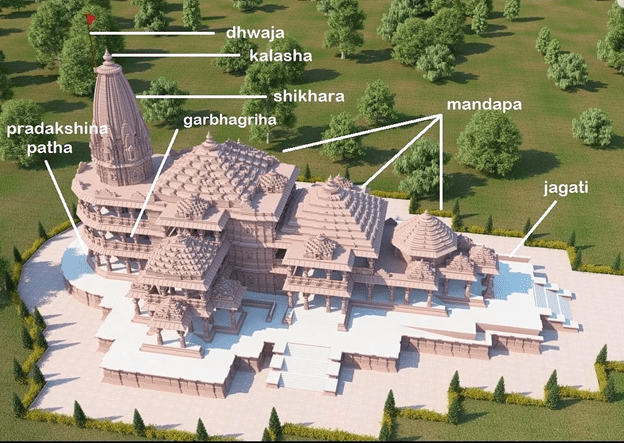
Characteristics
● Nagara temples feature a raised plinth as their foundation.
● The Garbha Griha, housing the deity's idol, is considered the most sacred area within the temple.
● The shikhara, resembling a mountain peak, stands tall above the Garbha Griha and symbolizes the natural and cosmological order in Hindu tradition.
● These temples typically include a circumambulatory passage around the garbha griha.
● One or more mandapas (halls) are aligned on the same axis as the garbha griha.
● Elaborate murals and reliefs often adorn the walls of Nagara-style temples, adding to their visual richness and cultural significance.
|
Note - Meru, Mandara and Kailasa are the first three names amongst the twenty types of temples described in the early texts. All three are the names of the Mountain, which is the axis of the world. |
Five Modes of Nagara Architecture:
● Valabhi:
Initiating as a solid rendition of the barrel-roofed wooden structure, resembling prayer halls associated with Buddhist shrines, the Valabhi mode in Nagara architecture is a formalized version of multi-eave towers. This mode often incorporates a piling up of slabs to create a distinctive architectural form.

● Phamsana:
Characterized by a shikhara formalizing multi-eave towers and involving a stacking of slabs, the Phamsana mode is linked to the Early Nagara Style. It signifies a developmental progression from the Valabhi mode in Nagara architecture.
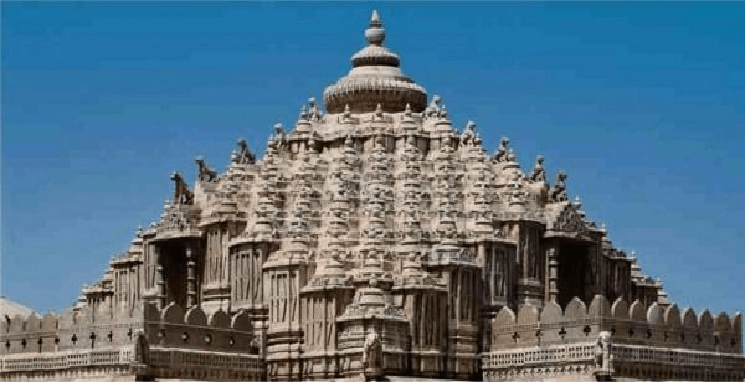
● Latina:
The Latina mode presents a shikhara as a single, slightly curved tower with equal-length sides. Originating in the Gupta heartland, it achieved its complete curvature by the early seventh century and subsequently spread across northern India, reigning as the pinnacle of Nagara temple architecture for three centuries.
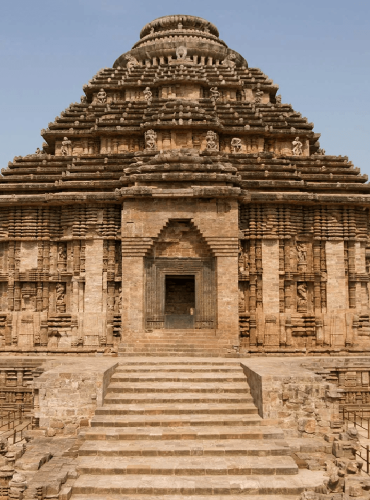
● Shekhari:
In the Shekhari mode, the shikhara features attached sub-spires or spirelets that mimic the main shape. These additional elements may extend up most of the shikhara's face and can vary in size, contributing to the overall architectural composition.
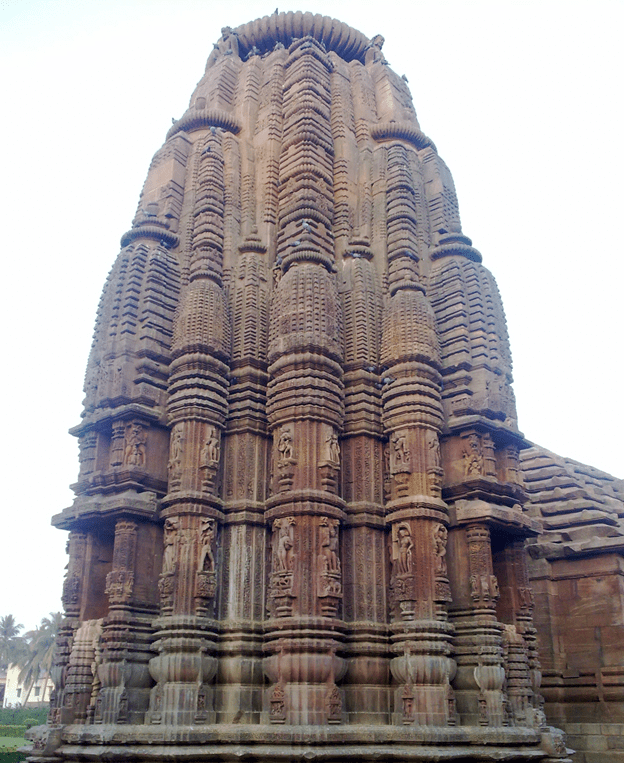
● Bhumija:
The Bhumija mode is characterized by miniature spires arranged in horizontal and vertical rows, creating a grid-like pattern on each face of the shikhara. The shikhara itself tends to approach a pyramidal shape, with the curvature of the Latina style becoming less prominent. This architectural style emerged from composite Latinas in the tenth century and onward in Nagara architecture.
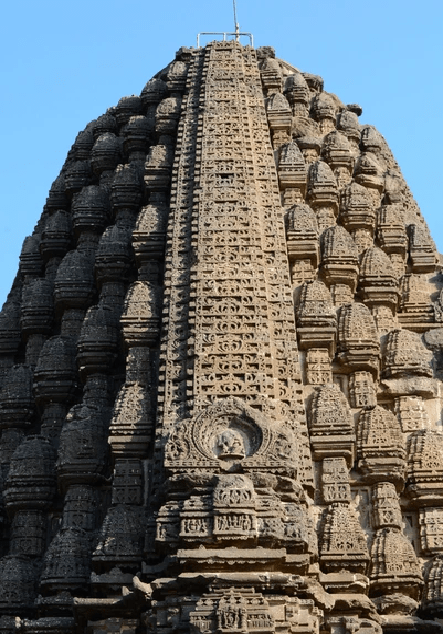
Comparison to Dravida Style
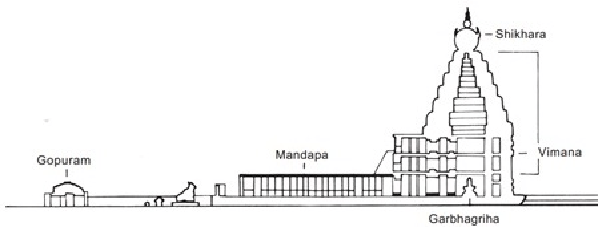
● In the context of Dravida architecture, the vimana serves as the counterpart to the shikhara. However, a significant distinction exists between the two styles.
● Within Dravida-style temples, vimanas are generally of smaller scale compared to the grand gatehouses or gopurams, which stand out as the most immediately striking architectural components within a temple complex. Additionally, in southern Indian architectural sources, references to shikharas pertain exclusively to the dome-shaped crowning cap atop the vimana.
● The presence of gopurams introduces another distinctive aspect of the Dravida style— the inclusion of a boundary wall. Unlike Nagara-style temple complexes, which typically lack distinctive boundary walls as an integral part of their design, Dravida-style temples incorporate these enclosing structures.
Conclusion
The Ayodhya Ram Mandir stands as more than just a temple; it represents faith, unity, and cultural heritage. Its construction marks a historic milestone in India, symbolizing the triumph of truth, justice, and righteousness. Beyond being a religious structure, the temple is a testament to resilience and devotion. This is a temple of national consciousness in the form of Ram.
For years, the Ayodhya Ram Mandir was at the heart of a complex religious and political dispute in India. The temple now stands as a symbol of hope and inspiration, showcasing the potency of faith and the indomitable strength of the human spirit.
As the inauguration of the Ayodhya Ram Mandir approaches, India anticipates the emergence of a significant spiritual and cultural center. The temple is poised to become a site of profound significance, reflecting India's diverse cultural and religious heritage. In essence, it serves as a lasting tribute to the enduring legacy of Lord Shri Ram.
|
Probable Questions for UPSC Mains Exam
|
Source – The Indian Express

